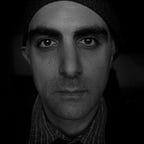The man and the Supernovae
In the early 19th century, British scientist Thomas Dick proposed creating a group of astronomers to observe the lunar surface 24/7 and record any changes that could suggest the presence of intelligent life: the construction of a city, the levelling of a hill, a new furrow in the ground. Although Dick’s thesis was somewhat fanciful, his method was based on a sound assumption: to discover something new in the vastness of space, one must know how to observe. For this reason, when between 1981 and 2008, Australian Protestant pastor Robert Owen Evans discovered over forty supernovae in just over twenty years, he was acclaimed as one of the world’s leading astrophiles.
Supernovae are stars at least five times the size of the Sun. At a certain point in their life cycle, they collapse on themselves and explode, releasing a tremendous amount of energy. This burst illuminates the galaxy they reside in for several days, even weeks, before fading away. Many consider supernovae to be the most powerful explosions a human being can witness in his lifetime.
The term supernova was coined by Swiss physicist Fritz Zwicky, borrowing the expression “Nova Stella”, used in the 17th century by astronomer Tycho Brahe to refer to this phenomenon. If such an event were to happen a few dozen light-years from our planet, it would result in shock waves that could instantly destroy the Earth. However, if it happened two or three hundred light-years away, it would cause beautiful light displays and auroras. Still, it would disturb the protective layers of our atmosphere and allow dangerous radiation to penetrate through. This would cause a slow and painful death, but — if this can reassure us — under the most mesmerizing sky we would have ever witnessed.
Luckily, no stars are close enough to Earth to potentially pose such a threat. Furthermore, the occurrence of supernovae is rare, and most of them are located at such a great distance that we can see them just as faint glimmers and detect them only because, for a brief time, a bright spot appears in a previously dark area of the sky.
Considering the vast number of stars we can observe with the naked eye or through a telescope, it is challenging to spot a supernova. The first recorded observation of a “new star” was made by a Chinese astronomer in 165 AD. The Crab Nebula, which we can see today, was formed by the debris released from the explosion of another supernova in 1054. Another “new star” was recorded in 1604. It remained visible in the sky for three weeks, even in daylight. Despite the invention of the telescope in the 17th century, all astronomers in the world had recorded less than 60 supernovae by 1980, after 1800 years of observations. It is not surprising the discovery of over 40 supernovae by pastor Robert Owen Evans in just over twenty years is considered a remarkable feat.
Evans began his “hunt” as a teenager, spending countless nights observing the sky in the hope of catching a star where there wasn’t one before. He succeeded for the first time at 44, in 1981, and has since discovered more than one per year, all without any special equipment. The Pastor is an amateur astronomer and has made all of his discoveries from his backyard, using an amateur telescope that he stores in a shed during the day. He seems to have a special gift. Evans has perfectly memorized every portion of the sky he has observed over the years. This enables him to notice the slightest change at a glance.
Robert Owen Evans held the record for discovering the highest number of supernovae, until 1987. That year, he was bested by an automated telescope invented by astronomer Saul Perlmutter. However, no other human being has ever surpassed Evan’s record using traditional means. In 2005, the pastor photographed 6814 galaxies in just 77 nights, a record that has only been surpassed by computerized systems. When asked if he plans to modernize and use more sophisticated instruments, Evans replies: “And then what? Where would be the fun?”
Further readings:
• Andrea Thompson and Kimberly Hickok. «What Is a Supernova?», Space.com
• Astronomy, Supernovae, Science and Religion. Pastor Robert Owen Evans’s website.
• «Evans Interview». Tenagra Observatory.
• «What Is a Supernova?». NASA Space Place.
